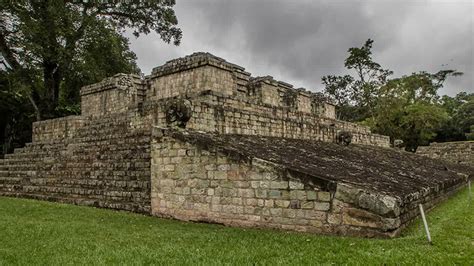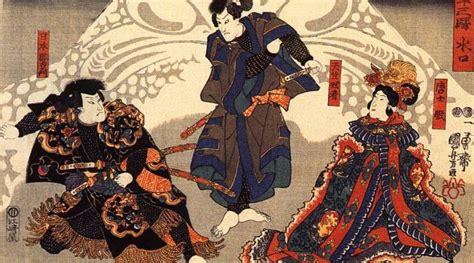Explore the rich history of Singapore from early settlement to modern achievements. Learn about colonial era, British rule, Japanese occupation, and the journey to independence.
Early Settlement of Singapore
Contents
Early Settlement of Singapore dates back to the 14th century when it was known as Temasek. It was a thriving trading port due to its strategic location along the major sea route. The island was later named Singapura, meaning Lion City, by a prince from Palembang in the 14th century. This early settlement was a melting pot of different cultures and traditions, as evidenced by the various artifacts and structures unearthed by archaeologists.
In the 19th century, Singapore became a key trading post for the British East India Company due to its natural harbor and proximity to important trade routes. This led to an influx of immigrants from China, India, and other parts of Southeast Asia, further enriching the cultural diversity of the island. The early settlers faced numerous challenges, including conflicts with neighboring powers and the impact of colonization on the indigenous population.
Despite these challenges, the early settlement of Singapore continued to grow and prosper, attracting more settlers and traders from around the world. The rich heritage and history of the early inhabitants laid the groundwork for the vibrant and cosmopolitan city-state that Singapore is today.
The early settlement of Singapore played a crucial role in shaping the island’s cultural identity and laying the foundation for its future development. It serves as a testament to the resilience and adaptability of the early settlers who braved the challenges of establishing a new home in a foreign land.
Colonial Era and British Rule
During the Colonial Era, Singapore was under British rule for approximately 140 years, from the founding of modern Singapore in 1819 to its independence in 1963.
Sir Stamford Raffles played a significant role in the establishment of British rule in Singapore when he signed a treaty with the Sultan of Johor, leading to the establishment of a British settlement on the island. This marked the beginning of Singapore’s colonial era under British rule.
The British implemented various policies and systems in Singapore, including the establishment of a legal framework, education system, and administrative structures that shaped the development of the country during the colonial period.
Under British rule, Singapore thrived as a major trading port, attracting migrants from China, India, and beyond, leading to the development of a diverse and multicultural society that continues to define Singapore today.
Despite the economic success and development during this time, the colonial era was also marked by social and political challenges, including racial tensions and limited political representation for the local population.
Japanese Occupation in World War II
The Japanese Occupation of Singapore during World War II was a period of great hardship and suffering for the people of the island. In February 1942, after a swift and brutal invasion, the Japanese forces took control of Singapore, leading to three and a half years of occupation. During this time, the local population endured severe food shortages, forced labor, and widespread atrocities committed by the occupying forces.
Many civilians and prisoners of war were subjected to harsh treatment, including torture and executions. The Sydney Morning Herald reported that the Japanese occupation of Singapore was characterized by brutality, torture, and death. The civilian population also faced the challenges of inflation and economic hardships as a result of the occupation.
One of the most infamous events of the Japanese occupation was the Sook Ching massacre in 1942, in which thousands of ethnic Chinese were rounded up and executed by the Japanese military. The legacy of this tragic period of history continues to be remembered and commemorated in Singapore today, with memorials and museums dedicated to those who suffered and perished during the occupation.
The end of the Japanese occupation came with the eventual surrender of Japan in 1945, marking the beginning of a new era for Singapore. The experiences of the occupation had a profound impact on the local population and played a significant role in shaping the collective memory and identity of the nation. The resilience and perseverance of the people of Singapore during this dark chapter of history serve as a poignant reminder of the strength and determination of the human spirit in the face of adversity.
Independence and Formation of Singapore
After experiencing a period of British colonial rule, Singapore gained independence on August 9, 1965. This marked the end of a tumultuous journey towards self-governance and nationhood for the island city-state.
The road to independence was not a smooth one, as Singapore faced numerous challenges in the years leading up to its separation from Malaysia. Tensions between the ruling People’s Action Party (PAP) and the United Malays National Organization (UMNO) in Malaysia led to racial and political unrest, ultimately resulting in Singapore’s expulsion from the federation.
Following its independence, Singapore faced the daunting task of establishing itself as a sovereign nation. With limited land and natural resources, the newly formed government had to focus on economic development and nation-building efforts to ensure the survival and success of the nation.
Under the leadership of its first Prime Minister, Lee Kuan Yew, Singapore implemented various policies aimed at promoting economic growth, social cohesion, and international relations. The country’s transformation from a struggling post-colonial state to a thriving global city-state is a testament to the vision and determination of its leaders and citizens.
Today, Singapore stands as a shining example of a successful independent nation, known for its high standard of living, strong economy, and efficient governance. Its remarkable journey from colonial outpost to independent powerhouse serves as a source of inspiration for many aspiring nations around the world.
Modern Singapore and Achievements
Singapore has undergone a remarkable transformation in the past few decades, emerging as a global powerhouse in various fields such as technology, finance, and education. The modern era of Singapore is defined by its rapid urban development, economic growth, and remarkable achievements in various sectors.
One of the key factors contributing to Singapore’s success in the modern era is its strategic location as a global financial hub. The city-state has established itself as a leading financial center in Asia, attracting multinational corporations and global talent. The government’s proactive policies and investment in infrastructure have positioned Singapore as a top destination for business and innovation.
Additionally, Singapore has made significant advancements in technology and innovation, becoming a leader in research and development. The country’s focus on developing a knowledge-based economy and investing in education and research has led to groundbreaking discoveries and technological innovations. Singapore’s achievements in science and technology have earned it a reputation as a global innovation hub.
Furthermore, Singapore has made significant progress in the fields of healthcare, sustainability, and environmental conservation. The country’s commitment to sustainable development and green initiatives has led to advancements in clean energy, environmental conservation, and urban planning. Singapore’s efforts in building a sustainable and environmentally-friendly city have been internationally recognized and applauded.
In conclusion, modern Singapore has achieved remarkable success in various fields, including finance, technology, and sustainability. The city-state’s strategic initiatives, investment in research and development, and focus on sustainable development have positioned it as a global leader in these areas, making it an exemplary model for other nations to emulate.













